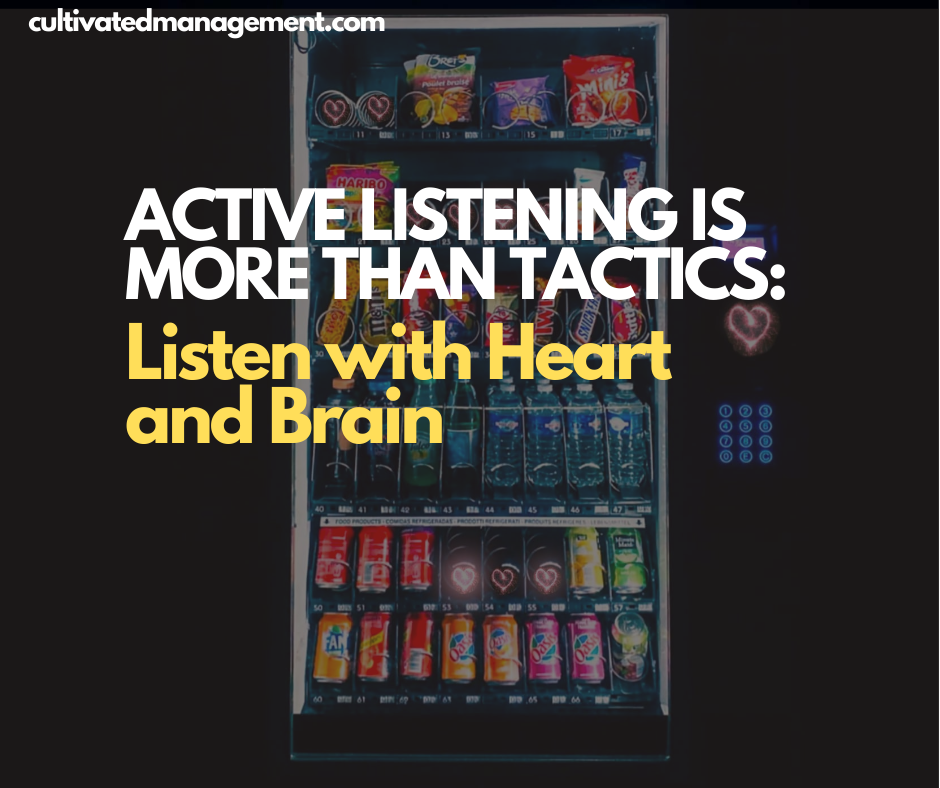
Active Listening Isn’t Just Tactics: Why Listening with Heart and Brain Matters
You could tell the execs had all been on some training recently. Active listening training, to be precise. They were acting differently — and not entirely in a good way. It was… a little weird. Off-putting even.
One spring morning, I sat at my desk overlooking the river, responding to the overnight email barrage. My eyes drifted to one of the execs emerging from his corner office.
Normally, you could feel the energy in the office shift the moment he moved. He was like a vending machine: push the right button, get a predictable, emotionless response. Efficient, cold, but reliable. We’d learned how to work with him. Push this, get that. Easy.
Today, however, was different. The training was in effect.
This article first appeared in the Meeting Notes newsletter - Get One Idea a Week to Lead with clarity and cultivate workplaces that enrich the lives of all who work in them.
He moved slightly less robotically, wearing a fake grin that was both terrifying and amusing. He scanned the room for people to speak to – victims. He asked questions. He nodded when people mumbled their responses.
His smile never wavered, though you could see it was tiring him out. It slowly morphed into a grimace – like a scary clown. His responses — although still machine-like — varied slightly from the usual canned lines. This just made everyone more uncomfortable.
He turned to face people with stiff, mechanical precision, all his joints moving in unison, like he was being wheeled on an invisible trolley. After his five minutes of “interaction,” he declared, “Time up,” reversed into his office, and closed the door with a wicked grin. Alfred Hitchcock would have been proud.
The stress evaporated, and the chat channels exploded. Was he okay? What was going on? Jokes and speculation flooded in.
It was just tactical active listening — advice I also share in my communication workshops. But it was missing the most important point: true listening is done with your heart and brain, not just your ears.
Listening is the greatest compliment you can give someone.
To actively listen, you must care. You must process what is said, digest it, and truly connect. You comprehend, accommodate, and respond with thought and emotion. You step into the other person’s shoes. You paraphrase in a way that shows understanding. You show that what they said matters.
👉 Check out this longer form blog on why active listening is the greatest compliment.
Pauline Oliveros once said:
"Expand your attention to include everything that you can possibly hear, without judgement. The ear hears. The brain listens."
I’d add: the heart then processes what you listen to.
Alas, the tactics didn’t last for Mr Vending Machine. He returned to his usual “push and respond” routine. And honestly, we were relieved. We knew where we stood. Outside work, he was a caring husband, father, and community member. At work, he donned his vending machine persona because that was all he knew. And we appreciated him for it. Mostly.
He never gave the greatest compliment we all wanted: to be truly listened to.
Not everyone learns to listen, but if you do, remember this: short-term tactics can work, but eventually, people will notice if you’re not truly listening. Your mask will slip.
Active listening isn’t just hearing words. It’s using your brain and your heart to process what’s said. It’s thoughtful, empathetic, and sincere. And it’s the greatest compliment you can give.
Now… where did the vending machine go? I need approval for more headcount. That’s option B2, followed by C3.
